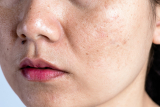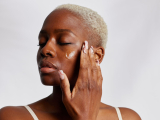Nuskin Blog
0
What You Need to Know About Skin Discoloration Hyperpigmentation, skin discoloration, melanin expression—call it what you will: when we talk about skin ...
0
If you’ve ever looked in the mirror and thought, “My poor pores!” you’re not alone. Yes, we’re talking about the approximately 20,000 tiny ...
0
Why Moisturizing Is Important Our wearied bedtimes and bustling mornings may make us consider skipping steps in our skincare regimens. But don’t give in to ...
0
Discover the Nu Skin Vera App 1/23/23 2:35 PM HEY, VERA® Discover the Nu Skin® Vera App From counting your calories to checking your bank account and ...




